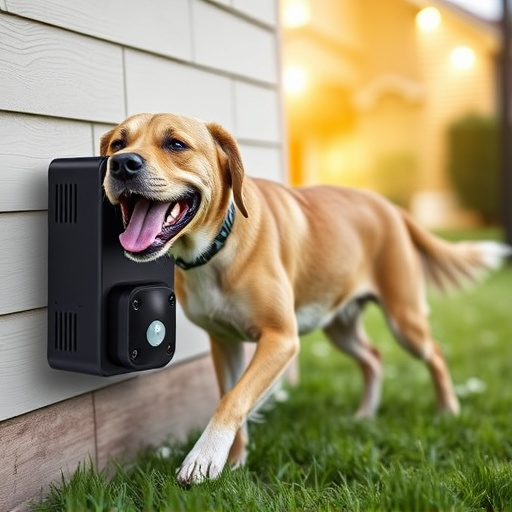Wireless home alarm systems, featuring advanced motion sensors including barking dog alarms, offer modern security with discreet installation, remote monitoring via smartphones, and customizable alerts. Choosing the right motion sensor requires considering your home's layout, habits, and pet activity to prevent false triggers. Easy installation, minimal maintenance, and low profile make these systems appealing for homeowners seeking reliable protection without complex setup. Regular updates and smart home integration further enhance peace of mind.
“Elevate your home’s security with wireless home alarm systems—a modern, efficient solution. This comprehensive guide unravels the benefits of wireless technology, ensuring peace of mind. We explore how these systems enhance compatibility with existing devices and offer tailored protection against intruders.
Key components, like advanced motion sensors and barking dog alarms, are crucial for a robust defense. Learn expert tips on selection, installation, and maintenance to create an impenetrable fortress around your home.”
Understanding Wireless Home Alarm Systems: Benefits and Compatibility
Wireless home alarm systems have revolutionized home security by offering a flexible and modern solution. One of the key components often found in these systems is the motion sensor, which plays a crucial role in detecting unauthorized entry. Unlike traditional wired systems, wireless setups eliminate the need for complex wiring, making them easier to install and less intrusive. This makes them particularly appealing for homeowners looking for a discreet yet effective security measure.
The compatibility of wireless alarm systems, including those with integrated motion sensors like barking dog alarms, is another significant advantage. These devices can often communicate wirelessly with central control panels, allowing for remote monitoring and control via smartphones or tablets. This feature ensures that homeowners can stay connected to their property’s security from anywhere, providing peace of mind and enhanced control over their home environment.
Selecting the Best Motion Sensor and Barking Dog Alarm for Your Needs
When choosing a home alarm system, selecting the right motion sensor and barking dog alarm is paramount to ensure effectiveness and avoid false triggers. These devices are designed to detect movement and potential intruders, but they must also account for common household activities and pets to prevent unnecessary alarms.
Consider your home’s layout and habits when making your selection. For example, a pet-friendly motion sensor with adjustable sensitivity settings can differentiate between a family member moving around and an unwanted visitor. Similarly, a barking dog alarm should be sensitive enough to detect real intrusions without being set off by the family dog. Look for products that offer customizable alerts and integration with other smart home devices for added convenience and peace of mind.
Installation, Maintenance, and Security Tips for a Reliable Wireless Alarm System
The installation process for a wireless home alarm system is typically straightforward and user-friendly, making it an attractive option for homeowners. These systems often come with easy-to-follow instructions, ensuring that even those without technical expertise can set them up. A common component is the motion sensor barking dog alarm, which covers large areas and provides reliable detection without the need for wired connections. During installation, ensure all sensors are placed strategically to monitor entry points, such as doors and windows. Regular maintenance is minimal but crucial. This includes testing sensors monthly and replacing batteries as needed, especially in remote or hard-to-reach sensors like those on the roof or in attics. A wireless system’s low profile also makes it less visible to potential intruders, providing an additional layer of protection.
To maintain security, keep your alarm system updated with the latest firmware and regularly review your settings. Ensure all family members know how to arm and disarm the system properly, and consider adding extra sensors for valuable items or areas requiring heightened security, such as a home office or safe room. Additionally, integrating smart home technology allows you to control and monitor your alarm remotely via a smartphone app, further enhancing convenience and peace of mind. Regular maintenance and updates are key to keeping your wireless alarm system reliable, ensuring its effectiveness in safeguarding your home.
